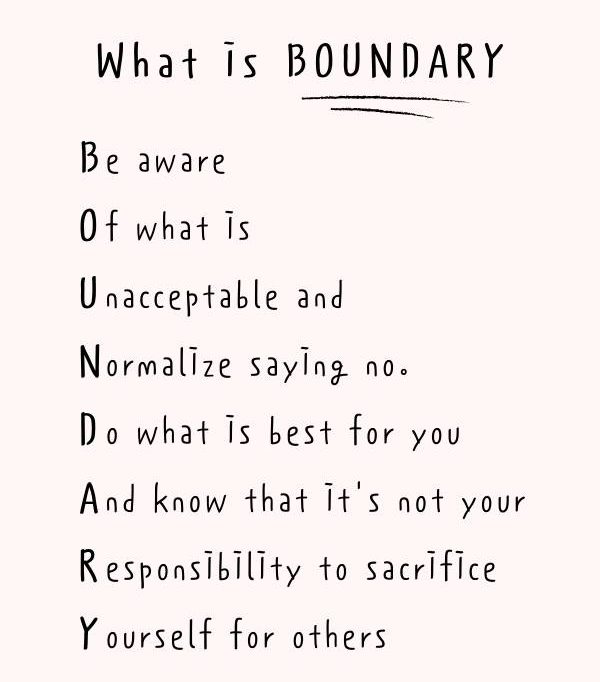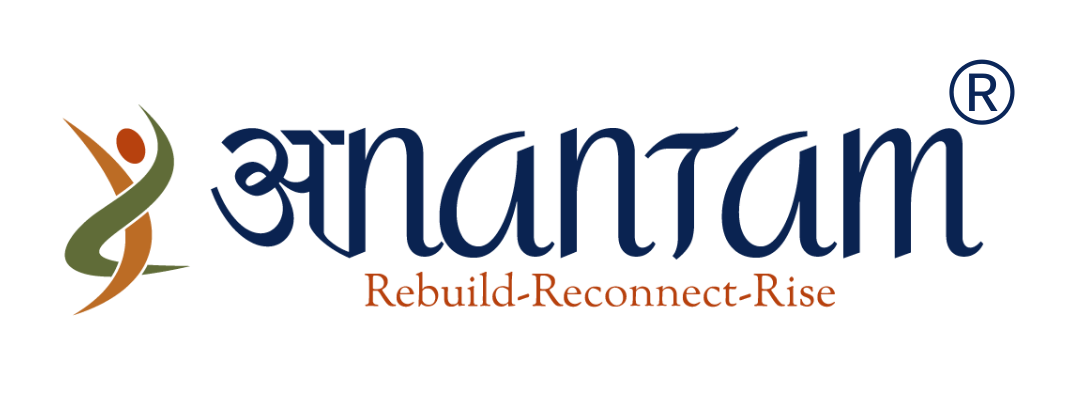Healthy boundaries are the ultimate guide to successful relationships. Without healthy boundaries, relationships do not thrive—they result in feelings of resentment, disappointment, or violation.
Boundaries are what happen when you can sense yourself and what you need and want and access your voice to speak to those things. We all have “limits,” and we all experience violations of our limits.
Here are some boundaries you deserve to have and what they may look like:
1. Physical boundaries: Physical boundaries include your needs for personal space, your comfort with touch, and your physical needs like needing to rest, eat food, and drink water. It is OK to let people know that you don’t want to be touched or that you need more space. It is also OK to say that you are hungry or need to rest.
Healthy physical boundaries might sound like this:
“I am really tired. I need to sit down now.”
“I am not a big hugger. I am a handshake person.”
“I need to eat. I am going to go grab something.”
“I am allergic to [insert here], so we can’t have that in our home.”
“No. I don’t want you to touch me like that.”
“Don’t go into my room without asking first.”
2. Emotional boundaries: Emotional boundaries are all about respecting and honoring feelings and energy. Setting emotional boundaries means recognizing how much emotional energy you are capable of taking in, knowing when to share and when not to share, and limiting emotional sharing with people who respond poorly. Respecting emotional boundaries means validating the feelings of others and making sure you respect their ability to take in emotional information.
It might sound like:
“When I share my feelings with you and get criticized, it makes me totally shut down. I can only share with you if you are able to respond respectfully to me.”
“I am so sorry you are having such a tough time. Right now, I am not in a place to take in all of this information. Do you think we can come back to this conversation later?”
“I am having a hard time and really need to talk. Are you in a place to listen right now?”
“I really can’t talk about that right now. It isn’t the right time.”
3. Time Boundaries: Your time is valuable, and it is important to protect how it is utilized. Setting time boundaries is incredibly important at work, home, and socially. Setting time boundaries means understanding your priorities and setting aside enough time for the many areas of your life without over-committing. When you understand your priorities, it is much easier to limit the amount of time you are giving to other people.
Healthy time boundaries might sound like this:
“I can’t come to that event this weekend.”
“I can only stay for an hour.”
“Do you have time to chat today?”
“I would love to help, but I would be over-committing myself. Is there another time?”
“We have family time on Sundays, so we won’t make it.”
“I am happy to help with that. My hourly rate is…”
4. Intellectual boundaries: Intellectual boundaries refer to your thoughts, ideas, and curiosity. Healthy intellectual boundaries include respect for the ideas of other people, and they can be violated when your thoughts and curiosity are shut down, dismissed, or belittled. Respectfulness and willingness to dialogue and understand are important here.
They might sound like:
“I know we disagree, but I won’t let you belittle me like that.”
“I would love to talk about this more, but I don’t think talking about it during Thanksgiving dinner is the best time.”
“When we talk about this, we don’t get very far. I think it is a good idea to avoid the conversation right now.”
“I can respect that we have different opinions on this.”

5. Material Boundaries: Material boundaries refer to items and possessions like your home, car, clothing, jewelry, furniture, money, etc. It is healthy to understand what you can and cannot share and how you expect your items and materials to be treated by the people you share them with.
This might sound like:
“We can’t give any more money. We would be happy to help in another way.”
“Sure! I am happy to share my dress with you. Just a heads-up, I do need it back by Friday.”
Material boundaries are violated when your things are destroyed or stolen or when they are “borrowed” too frequently. Another material violation is the use of materials (money and possessions) to manipulate and control relationships.
The more we set boundaries, the more we recognize them. In setting boundaries, we help people show up for us, and we also become better at showing up for them.
